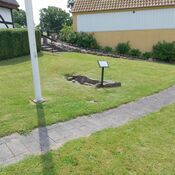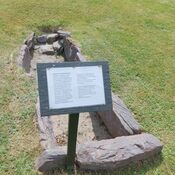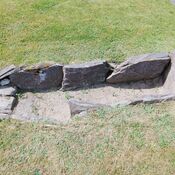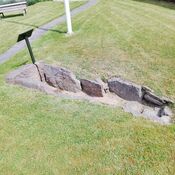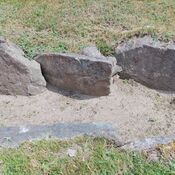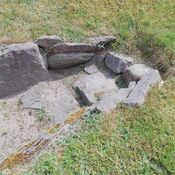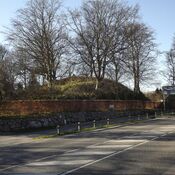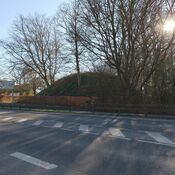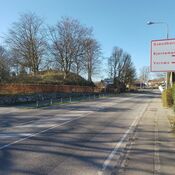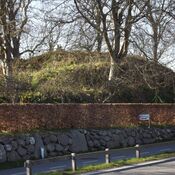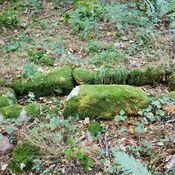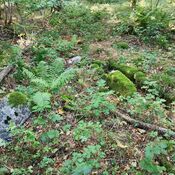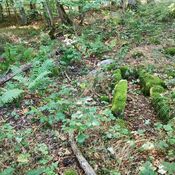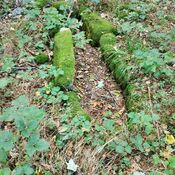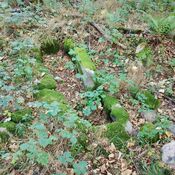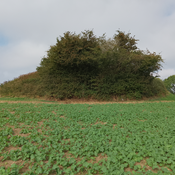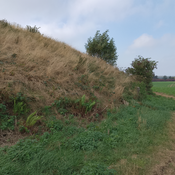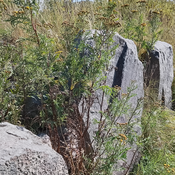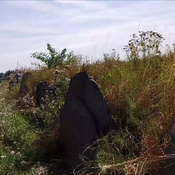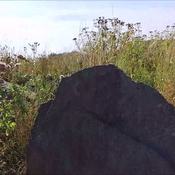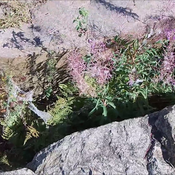Korshøj is a Bronze Age burial mound in Svendborg, probably from the Early Bronze Age (1800 BC to about 50 BC). The mound is notable for its unique location in the middle of a roundabout in Svendborg, where Højensvej, Lehnskovvej and Juulgårdsvej meet. The name "Korshøj" refers to this location in a crossroads that forms a cross. The mound has never been the subject of archaeological excavations.
The first official description of Korshøj dates from 1850, when the National Museum registered it.
The mound was protected in 1913. At the time of protection, the mound's dimensions were stated as 3.9 meters in height and with cross-sections of 18 meters (E-W) and 21 meters (N-S).
In 1983, the height was measured at 4.8 meters by the Danish Forest and Nature Agency, which described it as a monumental large mound with a distinctive location. The difference in height can possibly be explained by a lowering of the road around the mound in the 1950s.
On the north side of the mound, a stone staircase has been built, probably at the instigation of Egense Parish Municipality in the late 1940s or early 1950s.
These stairs were repaired by Svendborg Municipality in 2009.
Korshøj has historically functioned as a gathering place for the young people in the parish. In 1943, it caused a stir when students from
the Gymnastikhøjskolen rode over the mound on their riding horses.
There has been some confusion with another nearby mound called Loddenhøj, which has however been ploughed down.
https://www.kulturarv.dk/fundogfortidsminder/Lokalitet/8868/
https://www.youtube.com/watch?v=-bM9OKhuG0E





